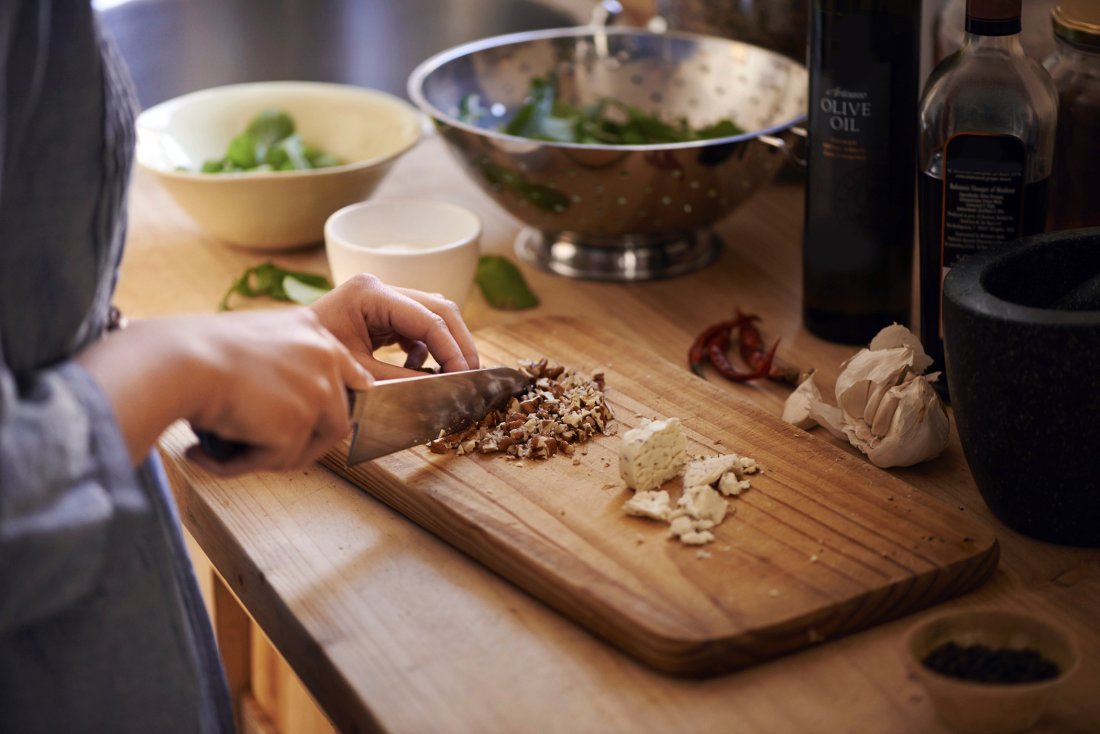
US-based nutritionist Cynthia Sass reveals that people who cook at home more frequently may also be baking more as well, and therefore consuming more sugary treats like cookies and brownies on a regular basis. The bottom line is cooking at home is a chance to either eat healthfully—or eat just as poorly as if you had ordered greasy takeout.
Compiled from Time Health, avoid these four common blunders to be able to take full advantage of the health opportunity home cooking offers.
1. Nibbling while cooking
Recently, many people have started keeping food diaries and some are shocked to discover just how much they eat while prepping and cooking. Mindless munching may result in you taking in 300 to 400 extra calories so beware.
The fix: If you’re hungry when you start making dinner, munch on low-calorie raw veggies such as bell pepper or sliced cucumber. Or factor your prep-time snack into your meal budget. For example, if you want to nibble on nuts, reduce the amount of olive oil you use in your dinner.
Here's a way to make your tea healthier
2. Carb overload
Many health-conscious people have given up white bread and pasta in favour of healthy starches such as quinoa, brown rice and daal. “The swap is fantastic for your health, but eating excess portions of these superfoods can still prevent weight loss, or lead to weight gain. Don’t ditch carbs altogether, but the amount you eat should be in proportion to your body’s energy needs in the hours after a meal,” adds Sass.
If you’ll mostly be sitting in the evening, your portion of anything starchy should be somewhere between a half cup to a cup (more if you’re younger, taller, and more physically active; less if you’re older, shorter, and exercise less). This portion does seem tiny, but when combined with a generous portion of veggies (think two cups) along with lean protein and a bit of healthy fat, it’s completely doable.
The fix: The trick is swapping the veggie and starch proportions in their meals, so veggies are the main attraction.
3. Cheese-ing out
People use far too much cheese in home-cooked meals, and as a result, they are racking up hundreds of surplus calories. Ounce for ounce, cheddar packs four times the calories and nine times the fat of skinless chicken breast. Many individuals think of it as a protein source, but an ounce of feta contains more fat than protein.
The fix: If you don’t want to give up cheese completely, think of it as a condiment and use it sparingly.
Here's a way to make your tea healthier
4. Indulging in dessert too often
Over the years, many people need a little something sweet after dinner. But one cookie can easily turn into three, and one serving of ice cream can easily become the whole pint. And once an after-dinner dessert pattern forms it can be challenging to break.
The fix: “The desire for sweets is often fuelled by emotions, such as the need for reward or comfort. If that’s the case, focus on the feelings, not the food. If you can find other healthy ways of meeting your emotional needs, your desire to indulge may naturally wane,” advises Sass. And if you really just need a treat, opt for a few tasting squares of dark chocolate, or make room for occasional desserts by cutting the carbs and fat in your meal, which is what most desserts are made from.
Have something to add to the story? Share it in the comments below






































COMMENTS
Comments are moderated and generally will be posted if they are on-topic and not abusive.
For more information, please see our Comments FAQ